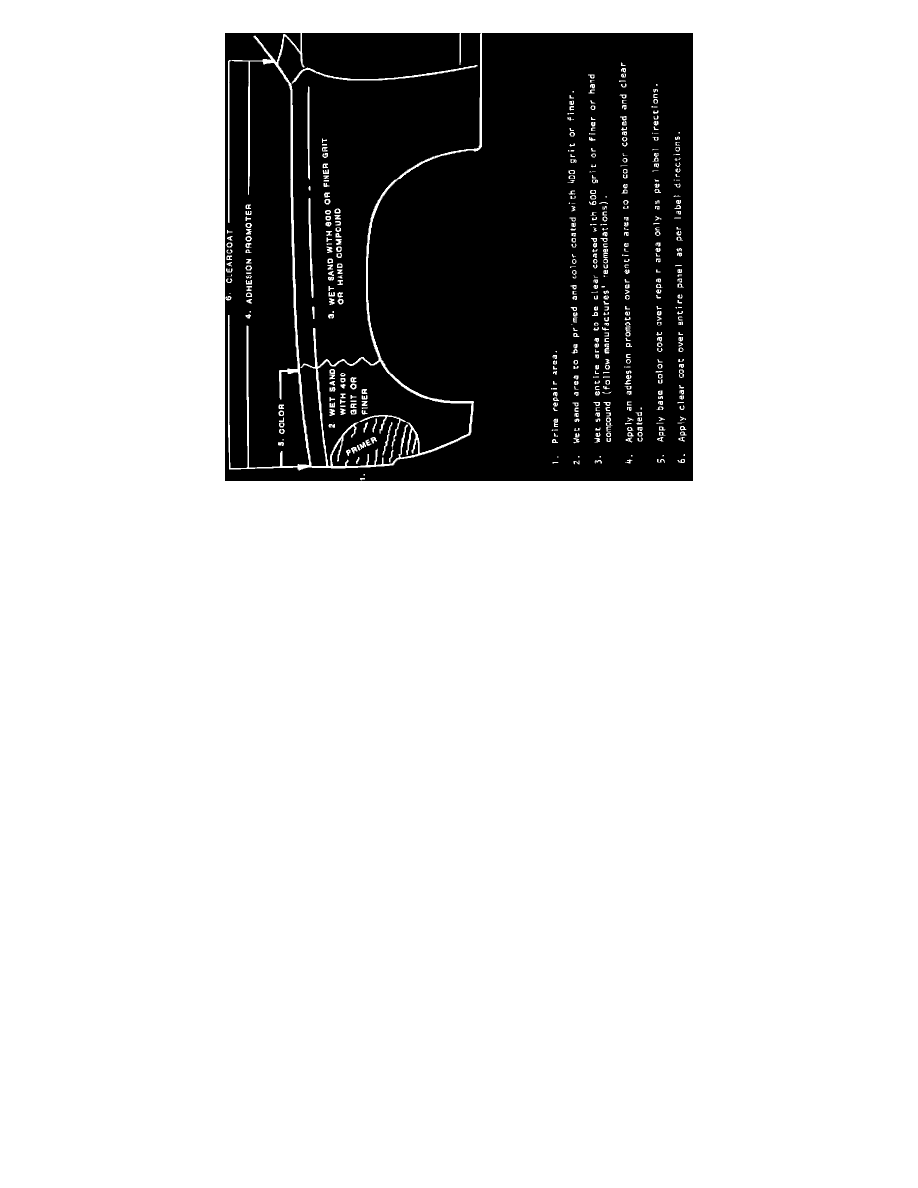Electra V6-181 3.0L (1985)

FIGURE 2 - TYPICAL FULL PANEL REPAIR WITH LACQUER OR ENAMEL CLEARCOAT
NONFLEXIBLE PANEL REPAIR SYSTEM
Procedure - Spot/Partial Repair with Blending (Figure 1) and Full Panel Repair (Figure 2)
Basecoat - Lacquer or Enamel
1.
Wash with a mild detergent and water to remove any water soluble contaminates, then clean with wax and grease removing solvent to remove any
tar, silicone or other road film not removed with the detergent wash.
2.
Repair and featheredge damaged area(s) as required.
3.
If substrate is metal, treat surface with a metal conditioner and conversion coating according to label directions. Allow to dry thoroughly and apply
primer-surfacer to repair area. Allow to dry 20-30 minutes before sanding.
4.
Using wet or dry #400 grit sandpaper or finer, sand entire area(s) to be refinished with the basecoat color. Areas to be clear coated only, should be
wet sanded with #600 or finer sandpaper or hand compound (follow manufacturers recommendations) .
5.
Reclean panel(s) with wax and grease removing solvent and then tack wipe.
6.
Apply one or two coats of adhesion promoter within moldings and/or breaklines of the panel section(s) to be refinished. When making paint
repairs to areas such as quarter panels where the repair is not confined within moldings or breaklines, apply adhesion promoter a minimum of 4-6"
onto adjacent panel. Adhesion promoter must extend beyond the area to be covered by the clear coat when not confined by molding (Figure 1).
Allow to flash a minimum of 30 minutes before applying base color coat. Some enamel basecoat may be require adhesion promoter. Follow
manufacturer's recommendations.
7A. Polyurethane Enamel Basecoat
CAUTION: There are a number of paint systems available for service use: however, may require additives containing isocyanates. It is essential that all
recommendations and warnings listed on the container label for materials selected be followed.
It is mandatory that adequate respiratory protection be worn.
Examples of such protection are:
3-M models #6984 and #6986 disposable respirators.
Such protection should be worn during the entire painting process. Persons with respiratory problems, or those allergic to isocyantes must
not be exposed to isocyanate vapors or spray mist.
a.
Following paint manufacturers' label directions, activate the Polyurethan Enamel material. Mix material thoroughly. Pot life of activated mixture is
approximately eight (8) hours.
